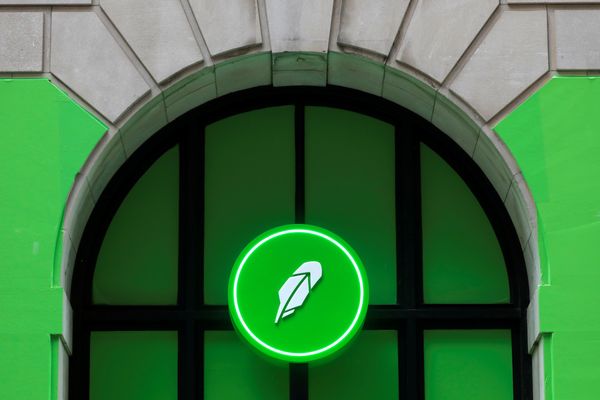Bitcoin is rebounding toward its record high from mid-March with the highly-anticipated April halving event just days away. The second major milestone that could propel bitcoin higher in 2024, the halving follows the January launch of bitcoin spot price ETFs. Bitcoin, spot bitcoin ETFs and Coinbase have spiked this year. But bitcoin miners have been more volatile in recent months after rallying to kick off 2024.
Halving events reduce by 50% the amount of crypto rewards doled out to miners. The practice was set out by Satoshi Nakamoto, the cryptocurrency's mythical creator, in the original bitcoin white paper published in 2008. Bitcoin "miners" get rewards for verifying its transactions and creating blocks. In the process, they also "create" bitcoins.
Halving the mining reward helps control the supply of bitcoins, which has a maximum limit of 21 million bitcoins. Some refer to the events as "halvenings," a blend of "halving" and "happening."
Bitcoin Halving Impact
The April halving is expected to occur between April 18 and April 21. It will cut mining rewards to 3.125 bitcoin per block. The last bitcoin halving event occurred in May 2020, when mining rewards fell to 6.25 bitcoin per block mined from 12.5 bitcoin per block.
Halving events occur after every 210,000 bitcoins are mined, which takes roughly four years. The price of bitcoin has historically risen in the months after halving events as the creation of new bitcoins slows.
"It's essentially a kind of supply shock on the market where the total amount of supply that's coming on is cut in half," Will Clemente, Reflexivity Research founder and crypto bull, previously told IBD. "Just from a raw supply-demand standpoint, you have less supply coming onto the market. Even if demand stays the same, price starts to drift upwards."
Bitcoin surged to around $20,000 by the end of 2017 from around $650 during the 2016 halving. Similarly, bitcoin hit a then-record high near $69,000 in November 2021 after trading around $8,800 prior to the 2020 halving, Matthew Sigel, head of digital assets research at VanEck wrote in a January research note.
Miners Are Bracing
Coinbase notes that even though halving events improve supply-demand technicals, they may not necessarily launch crypto bull runs.
"In our view, the halving's underlying significance lies in its ability to raise media attention around what makes bitcoin unique: a fixed, disinflationary supply schedule," a team lead by David Duong, head of institutional research, wrote in the Coinbase Institutional 2024 Crypto Market Outlook.
Moreover, the hash rate, or computational power required to mine bitcoin, continues to increase. That makes it more costly and difficult to mine new bitcoin. Therefore, the reduction in mining rewards, combined with higher processing power requirements, could lead to a shakeout among bitcoin miners as profit margins narrow, Duong says.
Sigel agrees that the halving event will create winners and losers. "Unprofitable miners will disconnect, ceding shares to those with low-cost power," he wrote in VanEck's 2024 crypto outlook. Sigel doubts it will stress the public markets thanks to improved balance sheets of listed bitcoin miners such as Marathon Digital and Riot Platforms. They control about 25% of the global hash rate.
Hut 8 Mining and U.S. Bitcoin Corp. in November merged in an all-stock transaction to form Hut 8 Corp.
Still, Bernstein on March 21 boosted its outlook on cryptocurrency mining stocks, based on bitcoin's run-up to near $74,000 and positive reception to the new spot bitcoin ETFs.
"With a new bitcoin bull cycle, strong ETF inflows, aggressive miner capacity expansion, and all-time high miner dollar revenues, we continue to find bitcoin miners compelling buys for equity investors seeking exposure to the crypto cycle," analysts Gautam Chhugani and Mahika Sapra wrote.
Bitcoin ETF Flows
Sigel said in his January research note that the spot bitcoin ETF launches in January brought a "dual effect" to the asset. "They've democratized access to bitcoin, allowing a wider range of investors to participate without direct digital asset ownership," Sigel wrote. "However, this created a headwind for the price of bitcoin due to increased market liquidity and one-way investor sentiment leading into the event."
He believes that a bitcoin rally this year could create a buying opportunity for BTC miner stocks that have underperformed so far this year.
BlackRock's iShares Bitcoin Trust has been the clear leader in fund inflows since the spot bitcoin ETFs launched Jan. 11. It has seen roughly $15.14 billion in inflows as of April 11, according to BitMex Research data. The Fidelity Wise Origin Bitcoin Fund ranks second at $8.05 billion in inflows. The ARK 21Shares Bitcoin ETF ranks third, with inflows of $2.25 billion.
The Grayscale Bitcoin Trust has recorded outflows of about $16.1 billion as of April 11. A large chunk of those stem from FTX and Genesis bankruptcy proceedings. Still, Grayscale remains the leader in terms of assets, with $22.13 billion in assets under management, followed by iShares Bitcoin Trust at $18.92 billion.
ETFs To Pace Buying
Despite GBTC's outflows, spot bitcoin ETFs recorded nearly $13.8 billion in inflows since launch.
Meanwhile, bitcoin ETF issuers will likely pace their buying and selling activity to reflect bitcoin's price action. Bitcoin ETF issuers will typically only transfer funds during times of trading. That's when they need to either buy or sell bitcoin based on the creation redemption activity of the fund, Kyle DaCruz, Director of Digital Assets Products at VanEck, previously told IBD. DaCruz said he could only speak on VanEck specifically.
Creation redemption activity refers to expanding or contracting the number of ETF shares to balance demand and keep the market price closely aligned with their underlying net asset value.
Bitcoin Price, Crypto Stocks
Bitcoin traded around $69,500 early Friday as the cryptocurrency works back toward its recent record levels. On March 14 bitcoin hit a new all-time high of $73,798, surpassing its prior peak of $68,990 set in November 2021.
The world's largest cryptocurrency rebounded about 157% in 2023. Bitcoin is now up about 64% so far this year, with most of the gains compounded in February and March.
Crypto exchange Coinbase, which is serving as custodian for the majority of the spot bitcoin ETFs, vaulted nearly 48% in 2024.
Spot bitcoin ETFs surged throughout February and peaked in mid-March to coincide with bitcoin's record high. The group is collectively trading well above their January launch-day prices.
Bitcoin mining stocks have fallen since the end of February. Marathon Digital shares have fallen about 47% from their Feb. 28 high of 34.09. MARA stock has recorded a 24% decline this year.
RIOT stock has tumbled 35.4% in 2024 after shares failed to break out from a cup-with-handle base in late February.
CleanSpark mounted nearly a 48% rally in March to 24.72 on March 27 — its highest level since April 2021. Shares have fallen since but CLSK stock is still up more than 39% this year.
You can follow Harrison Miller for more stock news and updates on X/Twitter @IBD_Harrison










